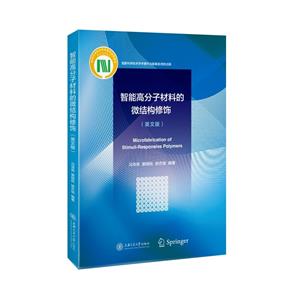Chapter 1 Reactive Platforms for Controllable Fabrication of Functional
(Bio)Interfaces
1.1 Scope of Surface Modification for (Bio)Reactive Platfor ms
and Functional (Bio)Interfaces
1.2 Chemical and Topographical Pattern Fabrication
from Micrometer to Nanometer Length Scales
References
Chapter 2 Surface Reactions and Fabrication of Bioreactive Platforms
Based on Organic and Polymeric Films: From Micrometer
to Nanometer Length Scale
2.1 Introduction: Bioreactive Platforms and Biointerfaces
via Organic and Polymeric Films
2.1.1 Organic and Polymeric Films
2.1.2 Pattern Fabrication on Organic and Polymeric Films
2.2 Surface Reactions of Organic and Polymeric Films
2.2.1 Self-assembled Monolayers
2.2.2 Surface Modification with Polymers
2.3 Patterned Organic and Polymeric Films for Tailored
(Bio)Interfaces
2.3.1 Microcontact Printing
2.3.2 Selective Molecular Assembly Patterning (SMAP)
2.3.3 Embossing and Nano-Imprinting
2.3.4 Self-assembled Block Copoly mer Patterns
References
Chapter 3 Confinement Effects on the Reactivity in Ultrathin Polymer
Films: Kinetics and Temperature Dependence of the Hydrolysis
of NHS and TBA Esters
3.1 Introduction
3.2 Ultrathin PNHSMA Polymer Films
3.2.1 Characterization of the Hydrolysis of PNHSMA Films
3.2.2 Temperature Dependence of Reaction Kinetics
3.2.3 Comparison of Surface Reactions in SAMs
and Ultrathin Polymer Films
3.3 Ultrathin PS_-b-PiBA_ Polvmer Films
3.3.1 Characterization of Polymer Thin Film Surface
Composition
3.3.2 Characterization and Kinetics of the Hydrolysis
of PSm-b-PtBA, Films
3.3.3 Investigation of the Temperature Dependence
of Reaction Kinetics
3.3.4 Effects of Film Thickness and Thermal Pretreatment
on Reaction Rates
3.3.5 Dependence of Hydrolysis Kinetics on Surface
Composition
3.3.6 Comparison of Reactivity of T-Butyl Esters
in PS,-b-PtBAm Thin Films and in Solution
3.4 Experimental Section
References
Chapter 4 Reactive Thin Polymer Films as Platfor ms
for the Immobilization of Biomolecules
4.1 Introduction
4.2 Investigation of the Reactivity of PNHS MA
4.2.1 Coupling of PEGsoo-NH2
4.2.2 Coupling of Fluoresceinamine and BSA to PNHSMA
Films1wvve
4.2.3 Comparison of Surface Reactions on PNHSMA Films
and NHS-C10 Monolayers
4.3 Swelling Behavior and Stability of PNHSMA Films
4.4 Immobilization of DNA and Surface-Based Hybridization
4.4.1 DNA Immobilization Studied by SPR
4.4.2 Investigation of DNA Hybridization by SPFS
and Fluorescence Microscopy
4.5 Toward the Detection of Pathogenic Bacteria on PNHSMA
Films
4.6 Experimental Section
References
Chapter 5 Tailored Biointerfaces via Derivatization
of Polystyrene-b-Poly(Tert-Butyl Acrylate) Thin Films
5.1 Introduction
5.2 Investigation of the Surface Chemistry of PS690-b-PtBA1210
Films
5.2.1 Surface Hydrolysis of PS690-b-PtBA1210 Films
5.2.2 Covalent Coupling of PEG to Activated
PSkon-b-PtBA n Films
5.3 Covalent Coupling of Biomolecules to Activated
PS690-b-PtBA1210 Films
5.4 Cell Adhesion Studies on PSs90-b-PtBA1210 Films
5.5 Experimental Section
References
Chapter 6 Fabrication of Robust Biomolecular Patterns by Reactive
Microcontact Printing on NHS Ester Containing Polymer Films
6.1 Introduction
6.2 Approaches for Micropatterning of PNHSMA Films
6.3 Functionalization of PNHSMA Films by Reactive u.CP
6.4 Non-specific Adsorption (NSA)
6.5 Patterning of PNHSMA and Coupling of (Bio)Molecules
to Patterned Films
6.6 DNA Hybridization
6.7 Experimental Section
References
Chapter 7 Reactive uCP on Ultrathin Block Copolymer Films
Investigation of the uCP Mechanism and Applications
to Sub-um (Bio)Molecular Patterning
7.1 Introduction
7.2 Strategy A: Fabrication of Multimo

















